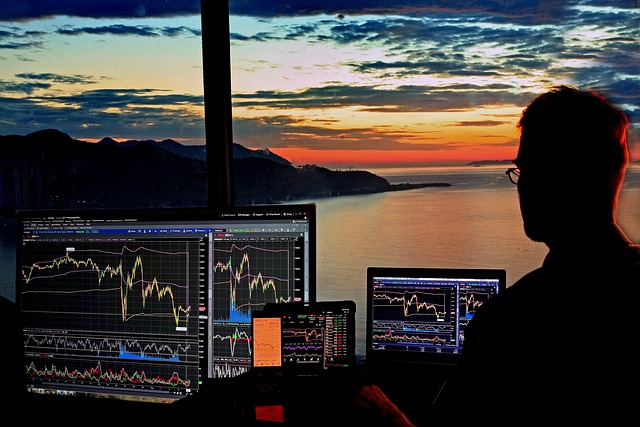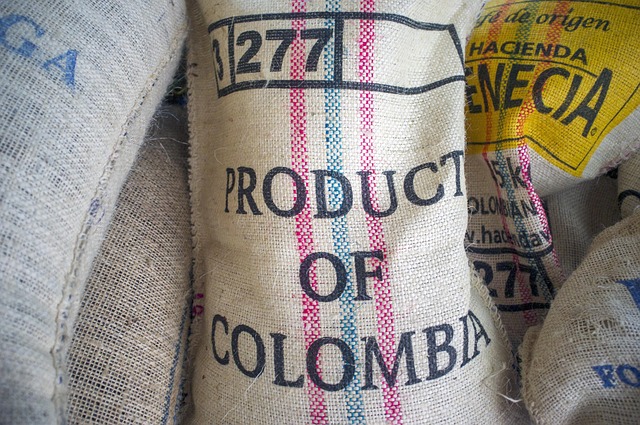Disadvantages of Commodity Trading
Author: Jameson Richman Expert
Published On: 2025-08-26
Prepared by Jameson Richman and our team of experts with over a decade of experience in cryptocurrency and digital asset analysis. Learn more about us.
Commodity trading, while often celebrated for its potential to generate substantial profits and diversify investment portfolios, is fraught with intrinsic complexities and significant risks that can jeopardize even seasoned investors. Unlike traditional equity markets, commodities are inherently exposed to a myriad of external influences—ranging from weather fluctuations and geopolitical upheavals to macroeconomic shifts—that can precipitate unpredictable and sometimes drastic price swings. These external factors introduce a level of volatility and uncertainty that demands a deep understanding and meticulous risk management. Drawing upon extensive experience in financial markets, I have observed that many newcomers are attracted by the prospect of quick gains without fully appreciating the depth of these challenges. To develop resilient trading strategies and effectively safeguard capital, it’s crucial to comprehend these disadvantages comprehensively. This article explores the primary risks associated with commodity trading, emphasizing the importance of informed decision-making, disciplined risk mitigation, and ongoing education for sustainable success.

Extreme Price Volatility and Unpredictability
One of the most defining—and challenging—features of commodity markets is their pronounced price volatility. Unlike stocks, which generally reflect a company's financial health and growth trajectory, commodities are heavily influenced by a broader spectrum of external factors. Weather anomalies such as droughts, floods, hurricanes, and unseasonal storms can drastically impact agricultural yields, leading to supply shortages and surges in prices. Similarly, geopolitical tensions, wars, sanctions, and trade disputes can disrupt global supply chains overnight, causing abrupt price fluctuations. For instance, geopolitical instability in the Middle East has historically caused crude oil prices to oscillate sharply within hours, affecting energy markets worldwide. This unpredictability complicates market forecasting and significantly elevates the risk of unexpected losses.
To navigate such volatility, traders must employ advanced risk mitigation tools—such as setting strict stop-loss orders, using options for hedging, and diversifying across multiple commodities to minimize exposure. Additionally, developing a keen understanding of seasonal cycles, inventory reports, and global demand-supply dynamics can aid in anticipating potential price movements. For those interested in timing strategies, resources like this comprehensive guide offer valuable insights into regional and global influences that impact commodity prices.
High Leverage and Its Perils
Leverage stands as both a potent tool and a perilous pitfall in commodity trading. Many trading platforms extend leverage ratios as high as 100:1 or more, enabling traders to control large positions with minimal capital. While leverage can amplify profits during favorable market movements, it also exponentially increases the risk of significant losses—sometimes exceeding the initial investment. I’ve personally experienced situations where minor adverse price movements, compounded by excessive leverage, resulted in the complete liquidation of my trading account due to inadequate risk controls.
Effectively managing leverage requires a disciplined approach—setting appropriate margin limits, employing stop-loss orders, and utilizing hedging techniques. It’s vital to recognize that high leverage acts as a double-edged sword; in volatile markets, overuse can wipe out accounts rapidly. Reputable trading platforms like Binance incorporate sophisticated risk controls—such as automatic stop-loss triggers and margin calls—to help traders manage exposure. To access these features and educational resources, consider using trusted registration links like this Binance registration.
External and Political Risks
Commodity markets are particularly vulnerable to external shocks driven by geopolitical and macroeconomic events. Political instability, sanctions, trade wars, natural disasters, and policy changes can trigger sudden and unpredictable price swings. For example, sanctions on Iran have historically impacted global oil supplies, causing volatile price spikes. Hurricanes disrupting Gulf Coast oil production or flooding affecting crop yields also lead to supply shortages and subsequent price surges. These external risks are often beyond traders' control, underscoring the importance of staying well-informed.
Utilizing real-time news feeds, geopolitical analysis, and official policy announcements becomes essential for proactive trading. Resources such as Crypto Trading Signals provide timely alerts and market updates, allowing traders to swiftly adjust their positions and avoid unnecessary losses. Building a habit of monitoring global news and understanding its potential impact on commodity prices can significantly enhance risk mitigation strategies, enabling traders to react promptly to unforeseen external shocks.

Liquidity Constraints and Market Depth Issues
Liquidity—the ease with which an asset can be bought or sold without significantly impacting its price—is a critical aspect of successful commodity trading. Major commodities like gold, crude oil, and natural gas generally benefit from high liquidity and extensive trading volumes. However, many niche or less-traded commodities suffer from thin markets, where liquidity is limited. Such conditions can cause slippage—where execution prices deviate from expected levels—especially during volatile periods or outside regular trading hours. Large orders in illiquid markets can lead to substantial price impacts, resulting in unfavorable fills and increased transaction costs.
My personal experience with agricultural commodities underscored the importance of analyzing market depth and timing trades during high-liquidity periods. Utilizing advanced tools like TradingView and other real-time charting platforms helps visualize order book dynamics, bid-ask spreads, and volume trends. These insights enable traders to execute large trades more efficiently, minimizing slippage and avoiding unfavorable market impacts. Recognizing the importance of market depth is crucial, especially when planning large position entries or exits in less liquid markets.
Complexity of Fundamental and Technical Analysis
Unlike equities, commodity markets demand a nuanced understanding of both fundamental and technical analysis. Fundamental factors include inventory levels, seasonal cycles, macroeconomic indicators, weather forecasts, and geopolitical influences. For instance, government reports on crop stockpiles or energy inventories can significantly sway prices. Technical analysis, involving chart patterns and indicators, is equally essential but requires a sophisticated grasp of volatility and market sentiment specific to commodities.
My initial difficulties in mastering these analyses stemmed from inadequate skills, which often led to poor timing and losses. Improving analytical capabilities involves joining specialized trading communities, studying industry reports, and leveraging expert signals—such as those provided in Elite Crypto Signals Discord. Continual learning, staying updated with weather reports, macroeconomic data, and geopolitical news, is vital for making informed trading decisions and reducing exposure to unforeseen market swings.
Regulatory Uncertainty and Policy Risks
Regulatory environments for commodities are subject to rapid change, often driven by government policies focused on environmental, safety, or geopolitical priorities. Tariffs, export bans, environmental restrictions, and sanctions can cause abrupt market disruptions. For example, restrictions on trade of certain metals or agricultural products can lead to shortages and heightened volatility. These policy shifts are frequently unpredictable, yet they have profound impacts on supply chains and prices.
Remaining vigilant involves monitoring official government releases, trade organization statements, and reputable news outlets. My experience with cryptocurrency markets has demonstrated how regulatory shifts can drastically impact asset prices—lessons that are equally applicable to commodities. For comprehensive insights into regulatory risks, explore analyses like this detailed Ethereum case.

Conclusion: Navigating Risks with Disciplined Strategies
While commodity trading offers lucrative opportunities, it inherently involves substantial risks that require a disciplined, well-informed approach. Volatility, leverage dangers, external shocks, liquidity constraints, and regulatory uncertainties can all lead to severe losses if not managed meticulously. Success in this arena depends on continuous education, robust risk management practices, and staying informed about global market developments.
Aspiring traders should dedicate time to thorough research, utilize reliable trading platforms equipped with risk controls, participate in expert communities, and craft personalized trading plans. Consistent profitability is rooted in patience, strategic planning, and ongoing learning. To stay ahead with the latest strategies and insights, explore resources like commodity trading timings in India and join community signals via Telegram trading groups.